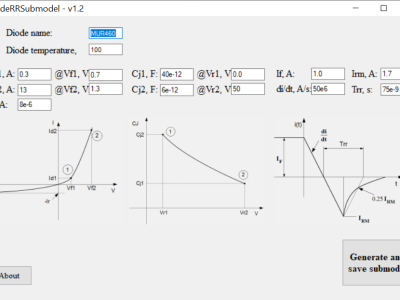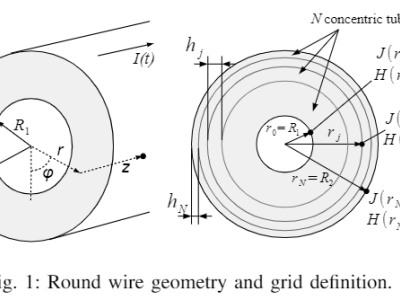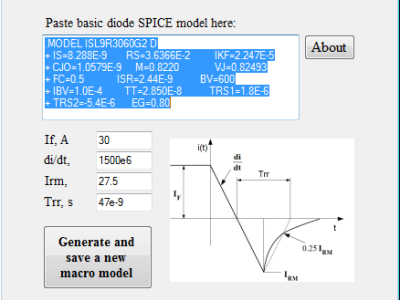
Peter O. Lauritzen and Cliff L. Ma proposed an approach for creating a physical model of reverse recovery for soft recovery diodes in 1991. The current paper demonstrates how to create the proper SPICE sub-circuit using only the specifications from the diode datasheet from the manufacturer. Software for characterization tools has been developed, tested, and is now openly accessible for use
- Categories:


